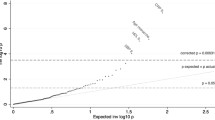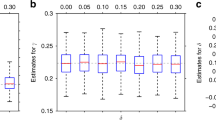Abstract
Objective
In the present study, we sought to identify causal relationships between obesity and other complex traits and conditions using a data-driven hypothesis-free approach that uses genetic data to infer causal associations.
Methods
We leveraged available summary-based genetic data from genome-wide association studies on 1498 phenotypes and applied the latent causal variable method (LCV) between obesity and all traits.
Results
We identified 110 traits causally associated with obesity. Of those, 109 were causal outcomes of obesity, while only leg pain in calves was a causal determinant of obesity. Causal outcomes of obesity included 26 phenotypes associated with cardiovascular diseases, 22 anthropometric measurements, nine with the musculoskeletal system, nine with behavioural or lifestyle factors including loneliness or isolation, six with respiratory diseases, five with body bioelectric impedances, four with psychiatric phenotypes, four related to the nervous system, four with disabilities or long-standing illness, three with the gastrointestinal system, three with use of analgesics, two with metabolic diseases, one with inflammatory response and one with the neurodevelopmental disorder ADHD, among others. In particular, some causal outcomes of obesity included hypertension, stroke, ever having a period of extreme irritability, low forced vital capacity and forced expiratory volume, diseases of the musculoskeletal system, diabetes, carpal tunnel syndrome, loneliness or isolation, high leukocyte count, and ADHD.
Conclusions
Our results indicate that obesity causally affects a wide range of traits and comorbid diseases, thus providing an overview of the metabolic, physiological, and neuropsychiatric impact of obesity on human health.


Similar content being viewed by others
Data availability
Summary-level data used in the present study are publicly available at the Complex Traits Genomics Virtual Lab (https://genoma.io/) web platform.
Code availability
Code used as part of the present manuscript is web platform-based work, which is available at the Complex Traits Genomics Virtual Lab (https://genoma.io/) web platform. Links and details to access the pipeline used in the present study are provided in the Methods section of this manuscript.
References
Anandacoomarasamy A, Caterson I, Sambrook P et al (2008) The impact of obesity on the musculoskeletal system. Int J Obes 32:211–222. https://doi.org/10.1038/sj.ijo.0803715
Andersen CJ, Murphy KE, Fernandez ML (2016) Impact of obesity and metabolic syndrome on immunity. Adv Nutr 7:66–75. https://doi.org/10.3945/an.115.010207
Ansa BE, Hoffman Z, Lewis N et al (2019) Aspirin use among adults with cardiovascular disease in the United States: implications for an intervention approach. J Clin Med Res. https://doi.org/10.3390/jcm8020264
Apovian CM (2016) Obesity: definition, comorbidities, causes, and burden. Am J Manag Care 22:c176–c185
Bulik-Sullivan B, Finucane HK, Anttila V et al (2015a) An atlas of genetic correlations across human diseases and traits. Nat Genet 47:1236–1241. https://doi.org/10.1038/ng.3406
Bulik-Sullivan BK, Loh P-R, Finucane HK et al (2015b) LD Score regression distinguishes confounding from polygenicity in genome-wide association studies. Nat Genet 47:291–295. https://doi.org/10.1038/ng.3211
Camilleri M, Malhi H, Acosta A (2017) Gastrointestinal complications of obesity. Gastroenterology 152:1656–1670. https://doi.org/10.1053/j.gastro.2016.12.052
Campia U, Tesauro M, Cardillo C (2012) Human obesity and endothelium-dependent responsiveness. Br J Pharmacol 165:561–573. https://doi.org/10.1111/j.1476-5381.2011.01661.x
Chang P, Friedenberg F (2014) Obesity and GERD. Gastroenterol Clin N Am 43:161–173. https://doi.org/10.1016/j.gtc.2013.11.009
Chauvet-Gelinier J-C, Roussot A, Cottenet J et al (2019) Depression and obesity, data from a national administrative database study: geographic evidence for an epidemiological overlap. PLoS ONE 14:e0210507. https://doi.org/10.1371/journal.pone.0210507
Chen S-Y, Feng Z, Yi X (2017) A general introduction to adjustment for multiple comparisons. J Thorac Dis 9:1725–1729. https://doi.org/10.21037/jtd.2017.05.34
Cortese S (2019) The association between ADHD and obesity: intriguing, progressively more investigated, but still puzzling. Brain Sci. https://doi.org/10.3390/brainsci9100256
Cortese S, Tessari L (2017) Attention-deficit/hyperactivity disorder (ADHD) and obesity: update 2016. Curr Psychiatry Rep 19:4. https://doi.org/10.1007/s11920-017-0754-1
Cuéllar-Partida G, Lundberg M, Kho PF et al (2019) Complex-traits genetics virtual lab: a community-driven web platform for post-GWAS analyses. bioRxiv 518027
Davis BB, Shen Y-H, Tancredi DJ et al (2012) Leukocytes are recruited through the bronchial circulation to the lung in a spontaneously hypertensive rat model of COPD. PLoS ONE 7:e33304. https://doi.org/10.1371/journal.pone.0033304
Day FR, Ong KK, Perry JRB (2018) Elucidating the genetic basis of social interaction and isolation. Nat Commun 9:2457. https://doi.org/10.1038/s41467-018-04930-1
De Lorenzo A, Soldati L, Sarlo F et al (2016) New obesity classification criteria as a tool for bariatric surgery indication. World J Gastroenterol 22:681–703. https://doi.org/10.3748/wjg.v22.i2.681
Dixon AE, Peters U (2018) The effect of obesity on lung function. Expert Rev Respir Med 12:755–767. https://doi.org/10.1080/17476348.2018.1506331
García-Marín LM, Campos AI, Martin NG et al (2021) Inference of causal relationships between sleep-related traits and 1527 phenotypes using genetic data. Sleep. https://doi.org/10.1093/sleep/zsaa154
Goodarzi MO (2018) Genetics of obesity: what genetic association studies have taught us about the biology of obesity and its complications. Lancet Diabetes Endocrinol 6:223–236. https://doi.org/10.1016/S2213-8587(17)30200-0
Gustafsson S, Lind L, Söderberg S et al (2013) Oxidative stress and inflammatory markers in relation to circulating levels of adiponectin. Obesity 21:1467–1473. https://doi.org/10.1002/oby.20097
Hall DMB, Cole TJ (2006) What use is the BMI? Arch Dis Child 91:283–286. https://doi.org/10.1136/adc.2005.077339
Hawkley LC, Cacioppo JT (2010) Loneliness matters: a theoretical and empirical review of consequences and mechanisms. Ann Behav Med 40:218–227. https://doi.org/10.1007/s12160-010-9210-8
Haworth S, Kho PF, Holgerson PL et al (2020) Assessment and visualization of phenome-wide causal relationships using genetic data: an application to dental caries and periodontitis. Eur J Hum Genet. https://doi.org/10.1038/s41431-020-00734-4
Higgins V, Nazroo J, Brown M (2019) Pathways to ethnic differences in obesity: the role of migration, culture and socio-economic position in the UK. SSM Popul Health 7:100394. https://doi.org/10.1016/j.ssmph.2019.100394
Hoffman M, Blum A, Baruch R et al (2004) Leukocytes and coronary heart disease. Atherosclerosis 172:1–6. https://doi.org/10.1016/S0021-9150(03)00164-3
Hozumi J, Sumitani M, Matsubayashi Y et al (2016) Relationship between neuropathic pain and obesity. Pain Res Manag 2016:2487924. https://doi.org/10.1155/2016/2487924
Hruby A, Hu FB (2015) The epidemiology of obesity: a big picture. Pharmacoeconomics 33:673–689. https://doi.org/10.1007/s40273-014-0243-x
Hurt RT, Kulisek C, Buchanan LA, McClave SA (2010) The obesity epidemic: challenges, health initiatives, and implications for gastroenterologists. Gastroenterol Hepatol 6:780–792
Kaur Y, Wang DX, Liu H-Y, Meyre D (2019) Comprehensive identification of pleiotropic loci for body fat distribution using the NHGRI-EBI Catalog of published genome-wide association studies. Obes Rev 20:385–406. https://doi.org/10.1111/obr.12806
Kim JH, Lim S, Park KS et al (2017) Total and differential WBC counts are related with coronary artery atherosclerosis and increase the risk for cardiovascular disease in Koreans. PLoS ONE 12:e0180332. https://doi.org/10.1371/journal.pone.0180332
Koellinger PD, de Vlaming R (2019) Mendelian randomization: the challenge of unobserved environmental confounds. Int J Epidemiol 48:665–671. https://doi.org/10.1093/ije/dyz138
Koo H-K, Kang HK, Song P et al (2017) Systemic white blood cell count as a biomarker associated with severity of chronic obstructive lung disease. Tuberc Respir Dis 80:304–310. https://doi.org/10.4046/trd.2017.80.3.304
Langer HF, Chavakis T (2009) Leukocyte-endothelial interactions in inflammation. J Cell Mol Med 13:1211–1220. https://doi.org/10.1111/j.1582-4934.2009.00811.x
Leick M, Azcutia V, Newton G, Luscinskas FW (2014) Leukocyte recruitment in inflammation: basic concepts and new mechanistic insights based on new models and microscopic imaging technologies. Cell Tissue Res 355:647–656. https://doi.org/10.1007/s00441-014-1809-9
Liu C-Y, Schoeler T, Davies NM et al (2020) Are there causal relationships between attention-deficit/hyperactivity disorder and body mass index? Evidence from multiple genetically informed designs. Int J Epidemiol. https://doi.org/10.1093/ije/dyaa214
Locke AE, Kahali B, Berndt SI et al (2015) Genetic studies of body mass index yield new insights for obesity biology. Nature 518:197–206. https://doi.org/10.1038/nature14177
Lumeng CN, Saltiel AR (2011) Inflammatory links between obesity and metabolic disease. J Clin Invest 121:2111–2117. https://doi.org/10.1172/JCI57132
Luppino FS, de Wit LM, Bouvy PF et al (2010) Overweight, obesity, and depression: a systematic review and meta-analysis of longitudinal studies. Arch Gen Psychiatry 67:220–229. https://doi.org/10.1001/archgenpsychiatry.2010.2
Mafort TT, Rufino R, Costa CH, Lopes AJ (2016) Obesity: systemic and pulmonary complications, biochemical abnormalities, and impairment of lung function. Multidiscip Respir Med 11:28. https://doi.org/10.1186/s40248-016-0066-z
Mannan M, Mamun A, Doi S, Clavarino A (2016) Prospective associations between depression and obesity for adolescent males and females—a systematic review and meta-analysis of longitudinal studies. PLoS ONE 11:e0157240. https://doi.org/10.1371/journal.pone.0157240
Martins-Silva T, dos Santos VJ, Hutz MH et al (2019) Assessing causality in the association between attention-deficit/hyperactivity disorder and obesity: a Mendelian randomization study. Int J Obes 43:2500–2508. https://doi.org/10.1038/s41366-019-0346-8
Mitchell NS, Catenacci VA, Wyatt HR, Hill JO (2011) Obesity: overview of an epidemic. Psychiatr Clin N Am 34:717–732. https://doi.org/10.1016/j.psc.2011.08.005
Munafò MR, Tilling K, Taylor AE et al (2018) Collider scope: when selection bias can substantially influence observed associations. Int J Epidemiol 47:226–235. https://doi.org/10.1093/ije/dyx206
Neale’s Lab (2018) GWAS Results. In: UK Biobank—Neale Lab. http://www.nealelab.is/uk-biobank. Accessed 29 Jul 2020
Ng M, Fleming T, Robinson M et al (2014) Global, regional, and national prevalence of overweight and obesity in children and adults during 1980–2013: a systematic analysis for the Global Burden of Disease Study 2013. Lancet 384:766–781. https://doi.org/10.1016/S0140-6736(14)60460-8
Noble WS (2009) How does multiple testing correction work? Nat Biotechnol 27:1135–1137. https://doi.org/10.1038/nbt1209-1135
O’Connor LJ, Price AL (2018) Distinguishing genetic correlation from causation across 52 diseases and complex traits. Nat Genet 50:1728–1734. https://doi.org/10.1038/s41588-018-0255-0
Panuganti KK, Nguyen M, Kshirsagar RK (2020) Obesity. In: StatPearls. StatPearls Publishing
Pirastu N, Cordioli M, Nandakumar P et al (2020) Genetic analyses identify widespread sex-differential participation bias. bioRxiv
Purnell JQ (2018) Definitions, classification, and epidemiology of obesity. In: Endotext [Internet]. MDText.com, Inc.
Queirós FC, Wehby GL, Halpern CT (2015) Developmental disabilities and socioeconomic outcomes in young adulthood. Public Health Rep 130:213–221. https://doi.org/10.1177/003335491513000308
Rosenberg L, Nanda KS, Zenlea T et al (2013) Histologic markers of inflammation in patients with ulcerative colitis in clinical remission. Clin Gastroenterol Hepatol 11:991–996. https://doi.org/10.1016/j.cgh.2013.02.030
Skyler JS, Bakris GL, Bonifacio E et al (2017) Differentiation of diabetes by pathophysiology, natural history, and prognosis. Diabetes 66:241–255. https://doi.org/10.2337/db16-0806
Speed MS, Jefsen OH, Børglum AD et al (2019) Investigating the association between body fat and depression via Mendelian randomization. Transl Psychiatry 9:184. https://doi.org/10.1038/s41398-019-0516-4
Stevens JR, Al Masud A, Suyundikov A (2017) A comparison of multiple testing adjustment methods with block-correlation positively-dependent tests. PLoS ONE 12:e0176124. https://doi.org/10.1371/journal.pone.0176124
Swarup S, Goyal A, Grigorova Y, Zeltser R (2020) Metabolic Syndrome. In: StatPearls. StatPearls Publishing
Tam V, Turcotte M, Meyre D (2019) Established and emerging strategies to crack the genetic code of obesity. Obes Rev 20:212–240. https://doi.org/10.1111/obr.12770
Yengo L, Sidorenko J, Kemper KE et al (2018) Meta-analysis of genome-wide association studies for height and body mass index in ∼700000 individuals of European ancestry. Hum Mol Genet 27:3641–3649. https://doi.org/10.1093/hmg/ddy271
Zammit C, Liddicoat H, Moonsie I, Makker H (2010) Obesity and respiratory diseases. Int J Gen Med 3:335–343. https://doi.org/10.2147/IJGM.S11926
Acknowledgements
AIC and LMGM are supported by UQ Research Training Scholarships from The University of Queensland (UQ). MER thanks the National Health and Medical Research Council and Australian Research Council’s support through a Research Fellowship (APP1102821).
Funding
L.M.G.M and A.I.C. are supported by UQ Research Training Scholarships from The University of Queensland (UQ). M.E.R. thanks support of the NHMRC and Australian Research Council (ARC) through a Research Fellowship (GNT1102821). P.F.K. is supported by an Australian Government Research Training Program Scholarship from Queensland University of Technology (QUT).
Author information
Authors and Affiliations
Contributions
MER and GC-P conceived and directed the study. LMG-M performed the statistical and bioinformatics analyses, with support and input from AIC, P-FK, NGM, GC-P and MER. LMG-M wrote the first draft of the paper and integrated input and feedback from all co-authors.
Corresponding authors
Ethics declarations
Conflict of interest
GC-P contributed to this study while employed at The University of Queensland. He is now an employee of 23andMe Inc., and he may hold stock or stock options. All other authors declare having no conflicts of interest.
Ethics approval
This study was approved by the Human Research Ethics Committee of the QIMR Berghofer Medical Research Institute.
Consent to participate (ethics)
Informed consent was obtained from all individual participants included in the study.
Consent to publish (ethics)
All participants provided informed consent for the publication of study results.
Additional information
Publisher's Note
Springer Nature remains neutral with regard to jurisdictional claims in published maps and institutional affiliations.
Supplementary Information
Below is the link to the electronic supplementary material.
Rights and permissions
About this article
Cite this article
García-Marín, L.M., Campos, A.I., Kho, PF. et al. Phenome-wide screening of GWAS data reveals the complex causal architecture of obesity. Hum Genet 140, 1253–1265 (2021). https://doi.org/10.1007/s00439-021-02298-9
Received:
Accepted:
Published:
Issue Date:
DOI: https://doi.org/10.1007/s00439-021-02298-9




